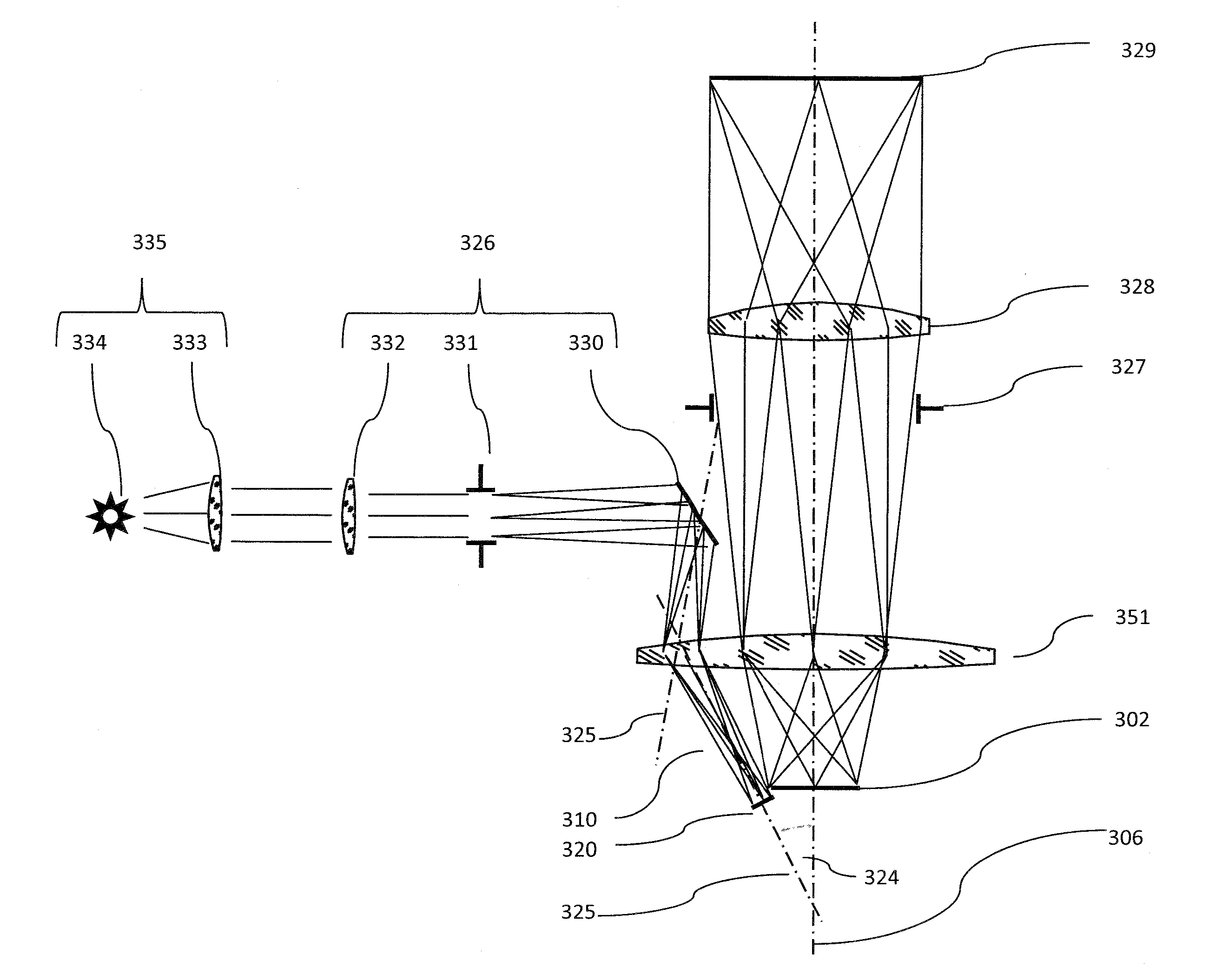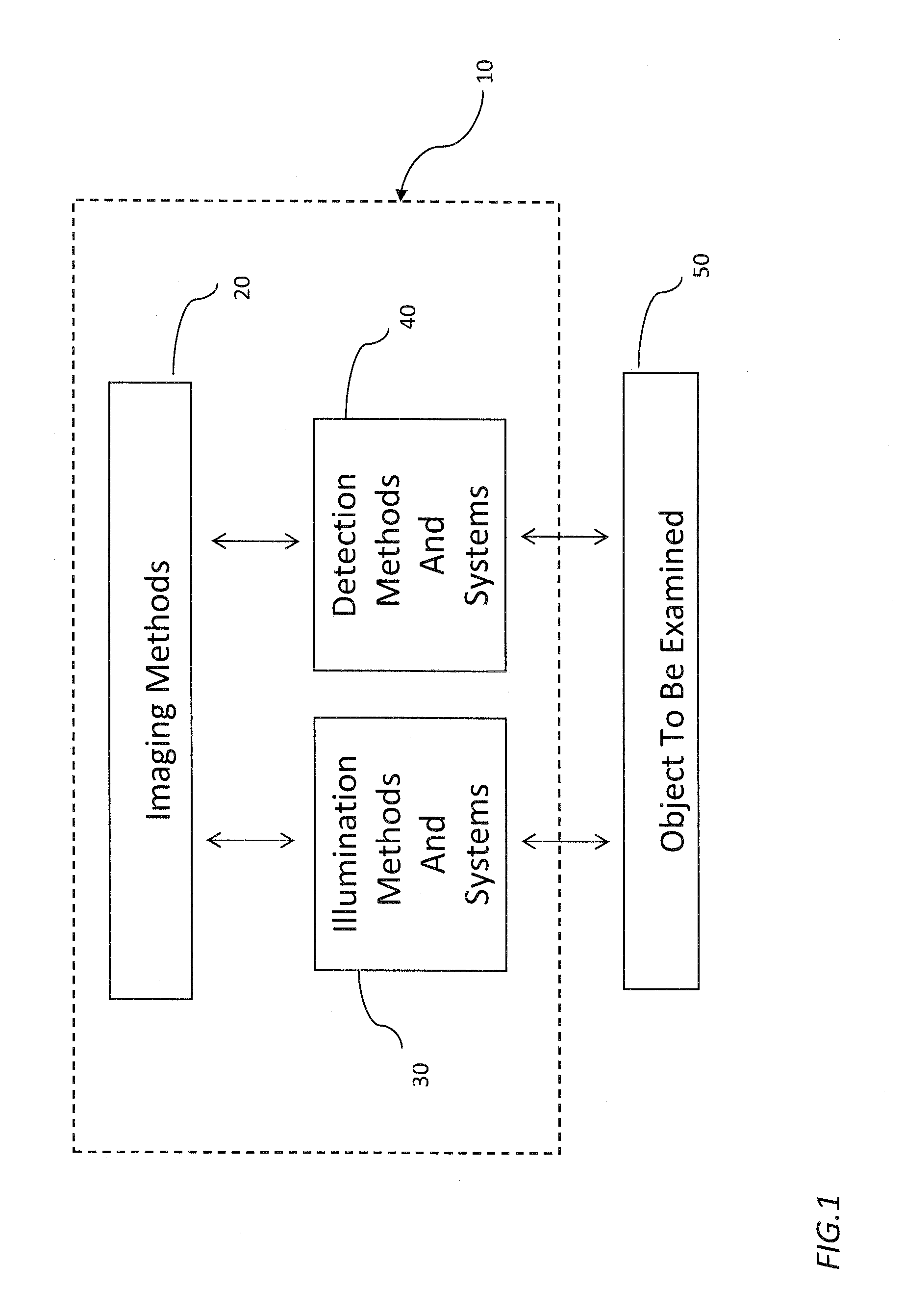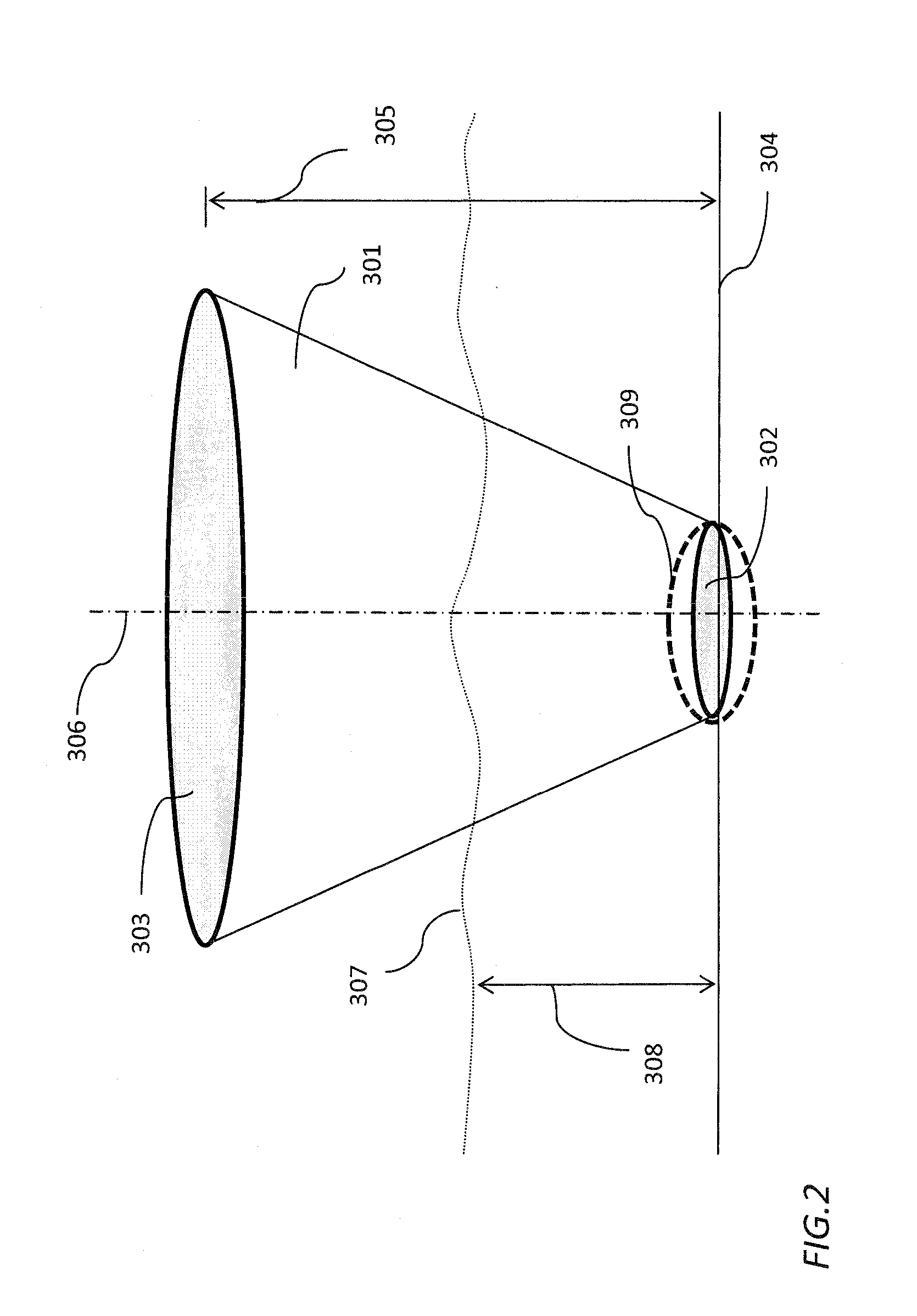Illumination Methods And Systems For Improving Image Resolution Of Imaging Systems
a technology of image resolution and imaging system, applied in the field of image resolution improvement, can solve the problems of inability to observe structures, inability to study transparent or thin specimens, and inability to study in-vivo targets such as microvascular structures, and achieve the effects of reducing or avoiding direct illumination of unrelated regions, reducing redirected light, and improving image resolution
- Summary
- Abstract
- Description
- Claims
- Application Information
AI Technical Summary
Benefits of technology
Problems solved by technology
Method used
Image
Examples
Embodiment Construction
[0028]FIG. 1 shows a block diagram of an embodiment of the imaging system according to the principles of the invention. The imaging system such as a microscopic system 10 use imaging methods 20 including illumination methods and detection methods. It has an illumination system 30 to illuminate light or electromagnetic wave in general onto an object or a target 50 to be studied. The object 50, for example, can be a tissue under investigation. The object 50 include the target region of study 309. The region inside the object but outside the target region 309 is called unrelated regions of study. It also has a detection system 40 to detect redirected light from the object 50. In the case of microscope, the microscopic imaging methods 20 that can be used on this system include, but are not limited to, the optical microscope, the Fluorescence Microscope, the OPS Microscope and the Confocal Microscope.
[0029]FIG. 2 shows the new concept of the detectable region of the imaging system, using...
PUM
 Login to View More
Login to View More Abstract
Description
Claims
Application Information
 Login to View More
Login to View More - R&D
- Intellectual Property
- Life Sciences
- Materials
- Tech Scout
- Unparalleled Data Quality
- Higher Quality Content
- 60% Fewer Hallucinations
Browse by: Latest US Patents, China's latest patents, Technical Efficacy Thesaurus, Application Domain, Technology Topic, Popular Technical Reports.
© 2025 PatSnap. All rights reserved.Legal|Privacy policy|Modern Slavery Act Transparency Statement|Sitemap|About US| Contact US: help@patsnap.com



